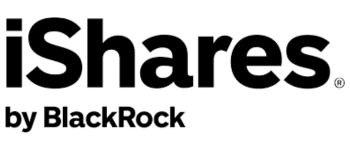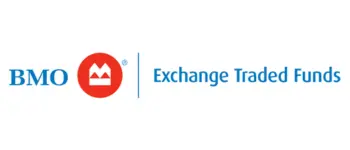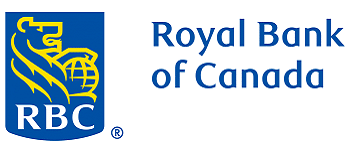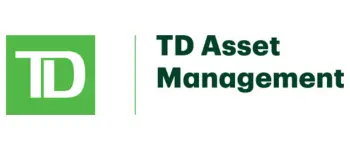Standout Preferred Share ETFs for Canadian Income Investors
Key takeaways
Diversified Yield Options – These ETFs provide exposure to Canadian (and some U.S.) preferred shares, offering an attractive income stream.
Rate Sensitivity Matters – Preferred shares behave like fixed income, making them sensitive to interest rate movements. Rising rates can put downward pressure on prices.
Active vs. Passive Strategies – Some ETFs track indices, while others use active management to navigate market inefficiencies.
One ETF I like way better than the ones on this list.Among retail investors, preferred shares are arguably known as one of the least popular securities.
Investors don’t always understand what “preferred shares” are. Furthermore, these shares tend not to move much in price, so those comparing stock charts of “common” and preferred shares of the same company may opt for the common share variant.
However, preferred shares make sense for a particular subset of investors: those looking to buy assets that produce income and have lower volatility.
Why? Let’s go over what a preferred share is, and you’ll get a better idea.
What exactly is a preferred share?
To explain a preferred share, it is often easiest to show the differences between it and another asset class you are likely familiar with, common shares.
Like a bond, preferred shares have a par value and can sometimes be called back by the company at that par value. Common stocks do not have this characteristic.
The second difference would be voting rights. As a preferred shareholder, you give up all voting rights you would receive holding common shares of the company.
The third notable difference would be that fixed-income investors are usually guaranteed a fixed dividend, while common shareholders are not. Essentially, the preferred shares are higher on the totem pole in terms of income payouts than common shareholders. You’ll get paid first.
The fourth and final difference I’ll go over is that preferred share prices are like bonds and other fixed-income securities in that their prices depend heavily on interest rates. Common stock prices, however, are strictly based on the supply and demand of the market.
Yes, interest rates and other elements can influence this supply and demand, but preferred shares are much more sensitive to it.
The one shared characteristic between preferred and common shares over something like a bond is that they typically do not have a maturity date.
Who are preferred shares best for?
If you’re looking for high yields and better price stability, preferred shares might be for you. The vast majority of preferred share purchases and holders are institutional investors.
You don’t see many retail investors dabbling in preferred shares, but the creation of preferred share Canadian ETFs or “exchange-traded funds” has made it easier for us to do so.
Exchange-traded funds offer simple diversification across entire markets or are targeted towards certain industries within larger markets, such as ETFs that aim to replicate indexes, ETFs that focus on niche markets such as banking, agriculture and commodities, or Canadian infrastructure ETFs.
We can now seek a diverse portfolio of preferred shares here in Canada instead of selecting individual preferred stocks. This reduces our overall risk and gives us one-click exposure to many companies and yields. These funds can be bought and sold on a stock exchange the same as any other fund or equity.
Let’s take a peek at some of the top preferred share ETFs to buy in Canada.
Which are the best preferred share ETFs to buy today?
- iShares S&P/TSX Canadian Preferred Share Index ETF (TSE:CPD)
- BMO Laddered Preferred Share ETF (TSE:ZPR.TO)
- Horizons Active Preferred Share ETF (TSE:HPR.TO)
- RBC Canadian Preferred Share ETF (TSE:RPF.TO)
- TD Active Preferred Share ETF (TSE:TPRF.TO)
- BMO US Preferred Share ETF (TSE:ZUP)
- iShares Canadian Financial Monthly Income ETF (TSE:FIE)
Broad exposure to Canadian preferred shares
iShares S&P/TSX Canadian Preferred Share Index ETF (TSE:CPD)

CPD tracks the S&P/TSX Preferred Share Index, providing passive exposure to a diversified basket of Canadian preferred shares. It is a go-to option for those seeking broad market representation.
Focus on rate-reset preferred shares
BMO Laddered Preferred Share ETF (TSE:ZPR.TO)

ZPR follows a laddered strategy, investing in rate-reset preferred shares with staggered maturity dates. This approach helps mitigate interest rate risk.
Actively managed preferred share exposure
Global X Active Preferred Share ETF (TSE:HPR.TO)

HPR takes an active approach, selecting preferred shares based on credit quality, yield, and macroeconomic factors. It aims to outperform passive alternatives.
Actively managed Canadian preferred shares
RBC Canadian Preferred Share ETF (TSE:RPF.TO)

RPF is another active ETF focusing on high-quality Canadian preferred shares, aiming for stable income with reduced volatility.
Tactical approach to preferred shares
TD Active Preferred Share ETF (TSE:TPRF.TO)

TPRF is a newer entry into the market, leveraging TD’s expertise to actively select preferred shares with strong income potential.
U.S. preferred shares with currency hedge
BMO US Preferred Share ETF (TSE:ZUP)

ZUP provides exposure to U.S. preferred shares while hedging currency risk, making it an attractive option for Canadian investors seeking diversification.
Hybrid fund with preferred shares and other financial assets
iShares Canadian Financial Monthly Income ETF (TSE:FIE)

FIE is a unique ETF that blends preferred shares, bonds, and financial sector equities, offering both income and growth potential.
Overall, there are many more preferred share ETFs in Canada, but these are some of the best
Many major fund producers like Vanguard, BMO, Horizons, CI Financial, and even many of the large banks here in Canada have their own preferred share ETFs.
Listing all of them would be redundant. Most of them have the same goals and often the same holdings. I’ve listed various ETFs to give you a taste of the different strategies and types of funds.
In a falling rate environment, we could expect more price appreciation on preferred shares. These funds have had a very good last few years. But if we plan to hold them long-term, short-term movements in price don’t mean much.
It is also important to review the commission structure of the brokerage you use to see if any of these funds can be traded commission-free, as this could be a nice bonus.
